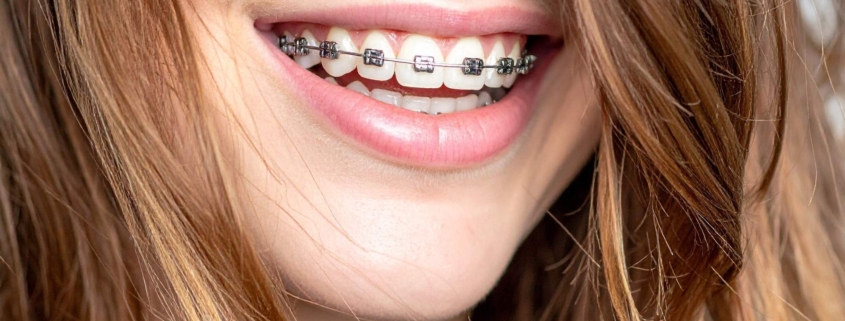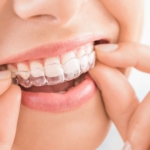Early Orthodontics: When Is the Best Time for My Child To Get Braces?
One moment, your child’s grin is full of baby teeth — and the next, a puzzle of gaps and twists.
You’re probably wondering, “At what age can a kid get braces?” It’s a great question, because waiting too long can sometimes cause more trouble (and costs) later on.
Every child’s smile develops differently, and the right timing can make a big difference in long-term dental health.
Breathe easy as we walk through when kids typically get braces, what qualifies as early orthodontic care, and when it’s time for that first orthodontic visit.
Table of Contents
- What Is the Best Age for a Kid To Get Braces?
- What Is Considered Early Orthodontic Treatment?
- 7 Indicators That Early Orthodontic Treatment May Be Necessary
- At What Age Can Kids Get Braces?
- Biermann Orthodontics: Serving Children’s Orthodontic Needs for Better Long-Term Dental Health
What Is the Best Age for a Kid To Get Braces?
There is no one answer to this question. Many kids get braces between the ages of 10 and 14, when most of their permanent teeth have come in. However, some benefit from earlier treatment to guide jaw growth and prevent future issues. The right timing depends on your child’s individual dental development and the orthodontist’s recommendation.
What Is Considered Early Orthodontic Treatment?
Early orthodontic treatment (also called Phase I treatment) happens before all permanent teeth have come in, often around age seven. At this stage, an orthodontist can spot and correct developing issues, guide jaw growth, and create more space for incoming teeth, preventing more complicated care later on.
Early intervention can also improve bite alignment, reduce the risk of overcrowding, and set the stage for a smoother, shorter Phase II treatment when most permanent teeth have emerged. If you’re not sure, it’s best to get a consultation. By starting early, orthodontists can help children achieve healthier, more balanced smiles, be more comfortable, and need fewer procedures as they mature.
Why Might Early Orthodontic Treatment Be Recommended?
The main goal of Phase I orthodontics is to keep minor dental issues from becoming major ones. When a child’s jaw is still developing, orthodontists can guide growth and address problems that can’t be easily fixed once everything is permanently set.
Benefits of early treatment include:
- Creating room in the mouth to limit overcrowding
- Preserving space for teeth that will erupt later
- Improving facial symmetry
- Reducing the need for tooth extractions or jaw surgery later
- Accelerating braces treatment
- Limiting trauma to protruding front teeth
- Correcting a bad bite early to prevent tooth decay, gum disease, or accidental chipping
Catching issues early helps orthodontists set the stage for a healthier, straighter smile and makes future treatment simpler and less costly. Even if your child doesn’t fully understand it, early orthodontic treatment is a gift. Your child won’t have to deal with future challenges and the financial impact of adult treatment.
Are you wondering if your child is a candidate for early orthodontic treatment? Schedule a visit with Dr. Matthew Biermann and let us guide you in the right direction.
7 Indicators That Early Orthodontic Treatment May Be Necessary
Every child’s smile progresses at its own pace, and sometimes the first hints of trouble aren’t obvious. From a tooth that seems out of place to subtle changes in jaw alignment, these small signals can hint that early intervention might help. By noticing these seven key indicators, you can give your child’s teeth the best chance to line up nicely and stay strong.
#1: Crowded Teeth
Teeth that overlap or twist make it complicated to brush and floss properly, increasing the risk of cavities and gum disease. When baby teeth are crowded, permanent teeth may not have room to come in straight. Early orthodontic treatment can help make space and guide new teeth into the right spots.
#2: Overbite/Underbite
An overbite happens when the top teeth stick out over the bottom teeth, and an underbite is when the lower teeth stick out past the top. Both can make chewing tricky, wear down teeth unevenly, and strain the jaw. Early treatment intervenes before it gets worse.
#3: Mouth Breathing
If your child frequently breathes through their mouth instead of their nose, it could signal a blocked airway or jaw alignment issue. Mouth breathing can affect how the jaw and teeth develop, sometimes leading to an open bite. Catching it early gives orthodontists a chance to correct the underlying problem.
#4: Lost Baby Teeth Early or Late
Teeth that come out too soon or hang around too long can throw off the timing and spacing of permanent teeth. This can cause crookedness or crowding down the road. Early monitoring helps orthodontists guide incoming teeth so they have room to come in nice and straight.
#5: Cheek Biting
Frequently biting the inside of the cheek while chewing isn’t just painful — it can be a sign that teeth don’t line up correctly. Left unchecked, it can hurt soft tissue and lead to sores. An orthodontist can figure out why it’s happening and fix the bite if needed.
#6: Facial Asymmetry
If one side of your child’s face looks different from the other, or the jaw seems uneven, it may point to a growth or alignment issue. Catching this early allows an orthodontist to help balance facial development while your child is still growing.
#7: Clenching or Grinding of Teeth
Grinding or clenching, especially at night, can wear down teeth, cause jaw pain, or lead to headaches. It’s often linked to bite problems or stress. Early evaluation can identify the cause and prevent damage while it’s still easy to treat.
At What Age Can Kids Get Braces?
There’s really no “too early” or “too late” for braces — it depends on your child’s unique smile. Some kids start treatment around age seven or eight if early correction is recommended, while others wait until most of their permanent teeth have come in, around ages 10–14.
More than age, orthodontists consider which teeth have erupted, how the jaw is developing, and whether spacing or bite issues are present. Starting too soon or waiting too long can both affect results, so the best approach is a personalized treatment plan based on your child’s growth and dental development.
If you’re in Beaverton, OR, and your child is ready for braces, check out Biermann Orthodontics for a seamless experience and personalized plan.
Timing of Orthodontic Treatment
Early orthodontic treatment (Phase I) is designed to get ahead of potential problems. By gently managing tooth alignment while your child’s smile is still taking shape, orthodontists make future dental work less complicated.
Starting sooner can reduce time in braces and set your child up for a smoother experience down the road. Like clearing the path before a hike, early intervention makes everything that follows simpler.
Biermann Orthodontics: Serving Children’s Orthodontic Needs for Better Long-Term Dental Health
Looking for a trusted orthodontist to get braces in Beaverton? At Biermann Orthodontics, we combine advanced technology with a personalized touch to make your child’s journey to a beaming smile as smooth and efficient as possible. Our goal is simple — confident, healthy smiles in less time, while prioritizing quality and care.
From the first consultation to the completion of treatment, our team works closely with families to create customized plans that fit each child’s unique needs, ensuring comfort, guidance, and long-term oral health every step of the way.


